3D Printing: My Mandalorian Helmets part 2
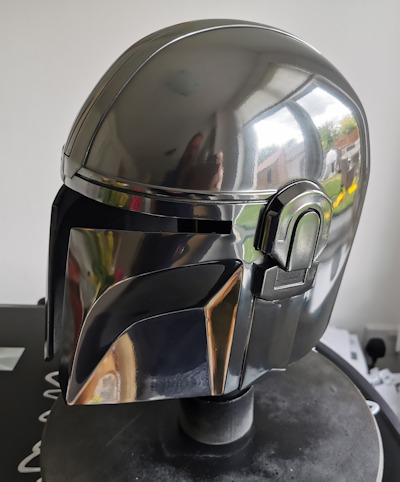
Painting My Mandalorian Helmets
I seem to have neglected my website for a whole year, although I was putting some stuff up on my Instagram page while I was experimenting. That's good news for you, the reader, because all I want to do just now is summarise the findings of my tests and get them published instead of writing screeds and screeds of stuff about methodology and theory. I'd imagine that suits everyone involved.
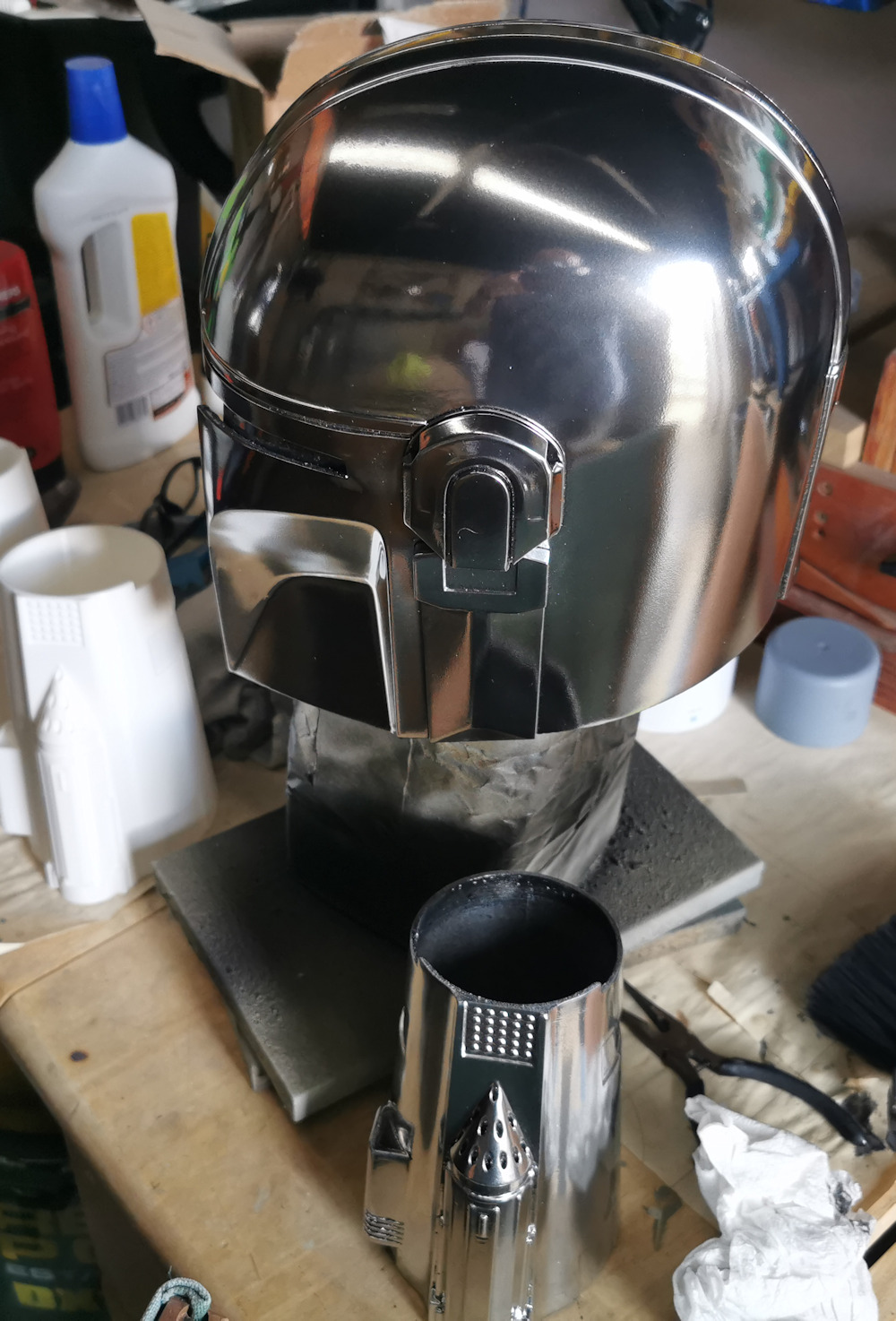
First off, the idea I hinted at for trying graphite powder on different colours involved me spraying three test pieces with a basecoat of three different spray cans of chrome and silver effect paints I'd collected up (Jenolite Chrome Spray is one example). Two of them repelled the graphite powder like I was sprinkling glitter on a Christmas card and had forgotten the glue. The third one was Rustoleum Metallic Elegant Finish Silver and it at least accepted some powder, but then darkened down just as much after being clear coated.
I also tried a white base coat. Preparation was to try four different priming methods, including no primer at all.
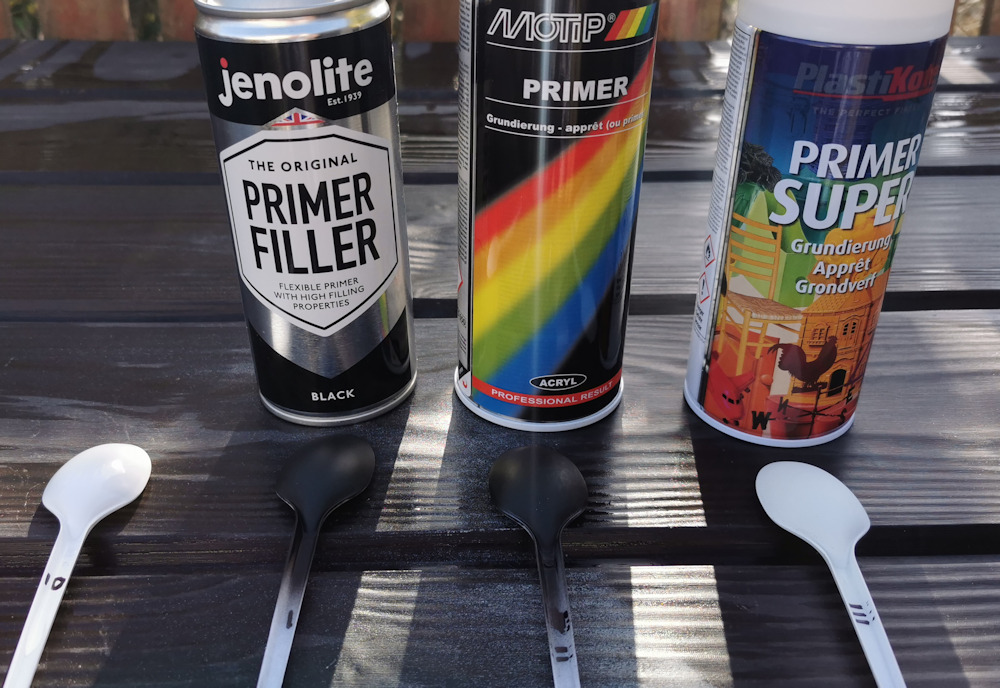
For white gloss, the can I happened to have at the time was called Turner & Gray Multi-Purpose White Gloss Finish and the graphite powder barely clung to it.
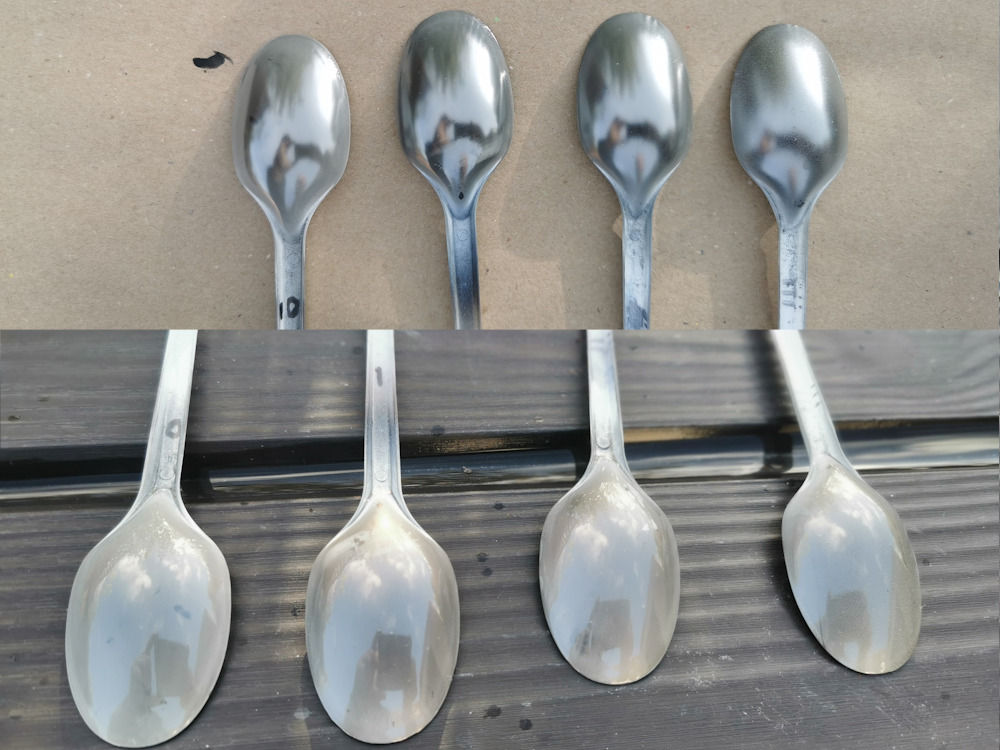
The second one on the left looked best, but by the time I clear-coated the spoons, the graphite had mostly all simply fallen off.
So... a black base it is, but which one? My experiments exposed that I'd been sabotaging my own efforts all this time because I always just went straight for Hycote when ordering gloss black paint, but this is how it looks compared to others.

These results were consistent across four spoons for each paint. I don't know why I'd plumped for Hycote...I mean the best thing I could think to say about its performance is that to date it has never actually exploded in use and taken my hand off or anything. Somehow, though, I'd fallen into the habit of buying it regularly and all my helmets so far had been painted with it.
I'd read at this point that enamel is the best type of base to use with Alclad, hence its inclusion here.
The quality of this gloss black finish did, of course, affect the Alclad and Spaz Stix paints.
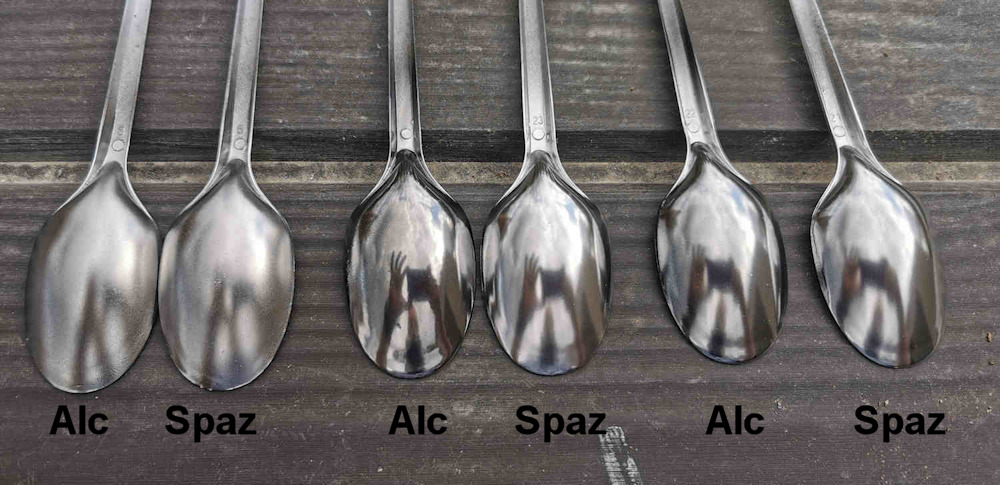
And the graphite rub.
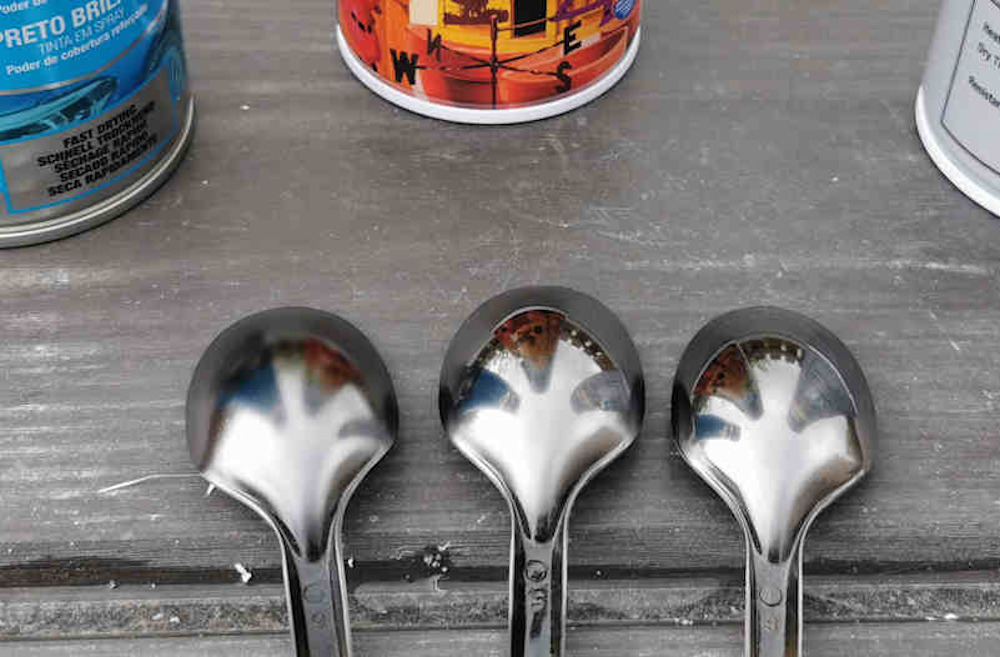

It's easy to think that the Alclad Chrome paint comes out best in these photographs, but what is not showing up is how speckly it is. This effect has really put me off using it. I spend ages going round and round a helmet, maybe a dozen coats, and it always looks okay until I take it out into natural light and then a black speckled rash shows through the chrome paint. It's quite hard to see in a photo' despite how obvious it is in real life, but this small picture sort of captures it. I basically have to keep hosing on the Alclad until the model is a silver, tin foil colour. As a result, I've stopped buying it for now and have begun using Spaz Stix instead, which goes on more evenly with fewer coats. I'll withhold a final decision on this part just now and concentrate on graphite.
So, my next step was to seal the graphite rub.By now I'd looked into this a lot and realised I was using the wrong Alclad to seal it. I should have been trying Aqua Gloss, which is a milky colour, so I bought some. I also read that Gauzy was great for metallics so I got some of that. In the end I decided that Gauzy was indeed better than Alclad.
Now armed with the knowledge that the ideal combination includes plastiKote gloss black and Gauzy, I set out to compare a graphite rub with a chrome airbrush paint (still Alclad at the time). Unfortunately the canvases were not exactly equal because one helmet developed a noticable orange peel effect at the gloss black stage while the other one didn't.
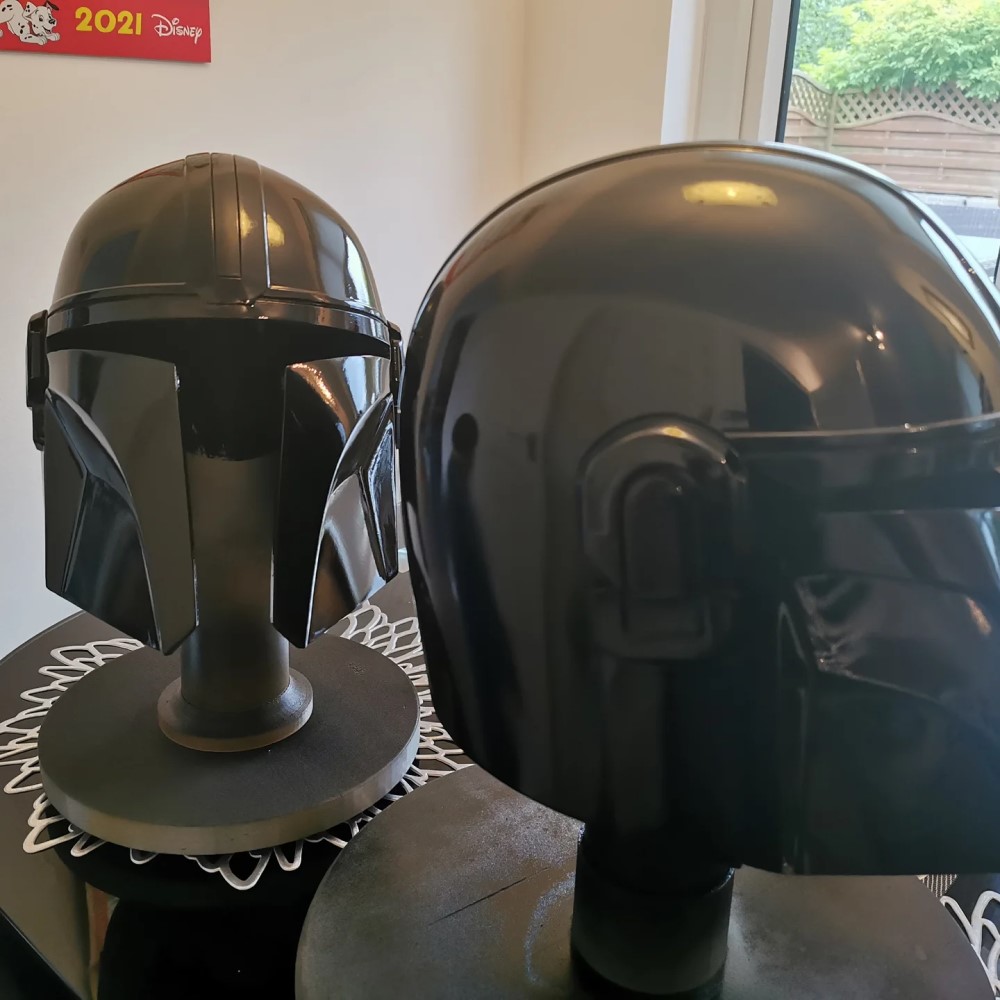
I used the smoothest one for the graphite rub and it turned out like this:

The Alclad, meanwhile, looked like this:
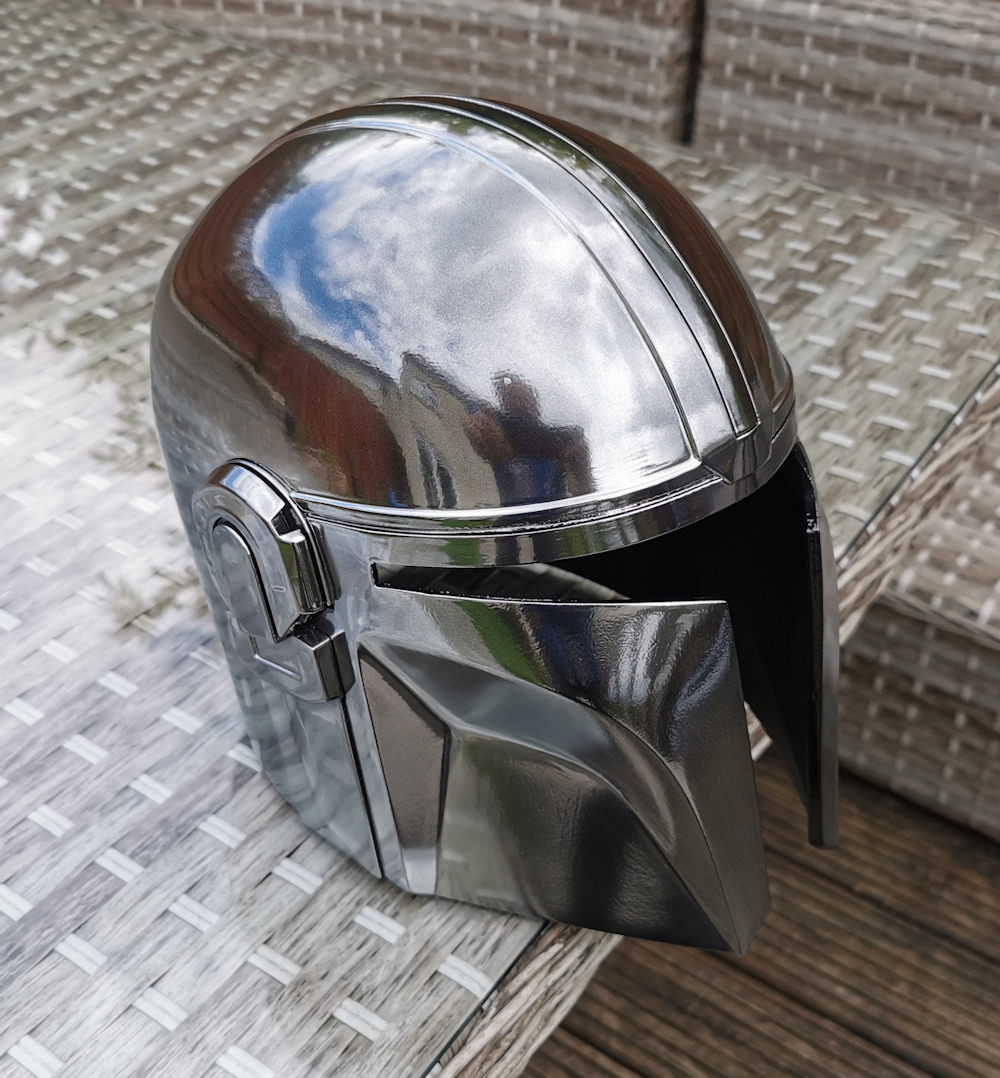
If only that was it and I was able to say that graphite is clearly the best colour and finish. Unfortunately, a fingerprint, splash of water or spot of rain will ruin it so it has to be sealed and after doing that; this is the difference Gauzy makes to both of them.

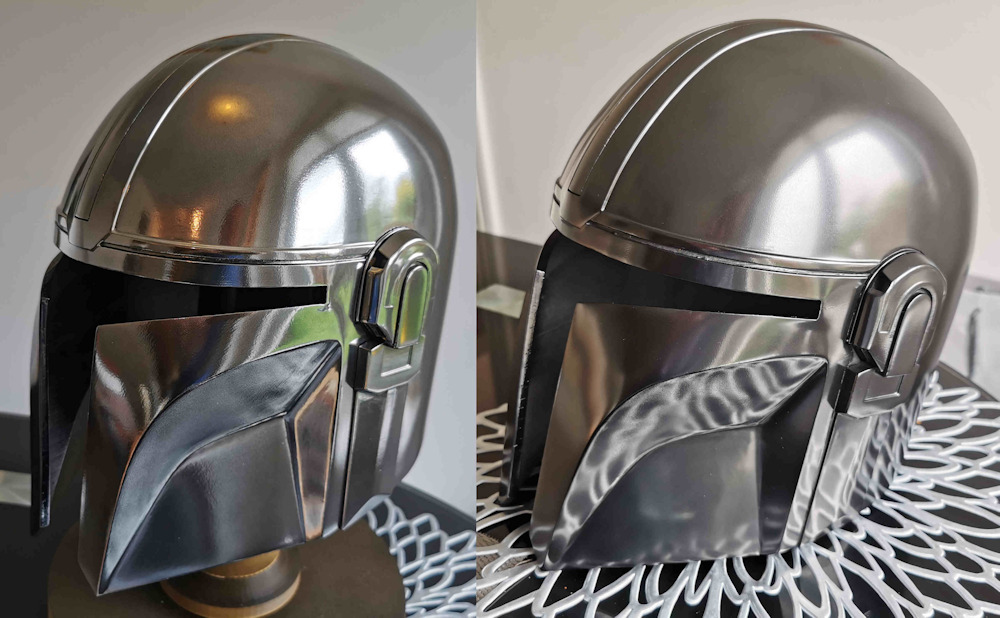
And here are the two side by side, speckles Vs toned down.
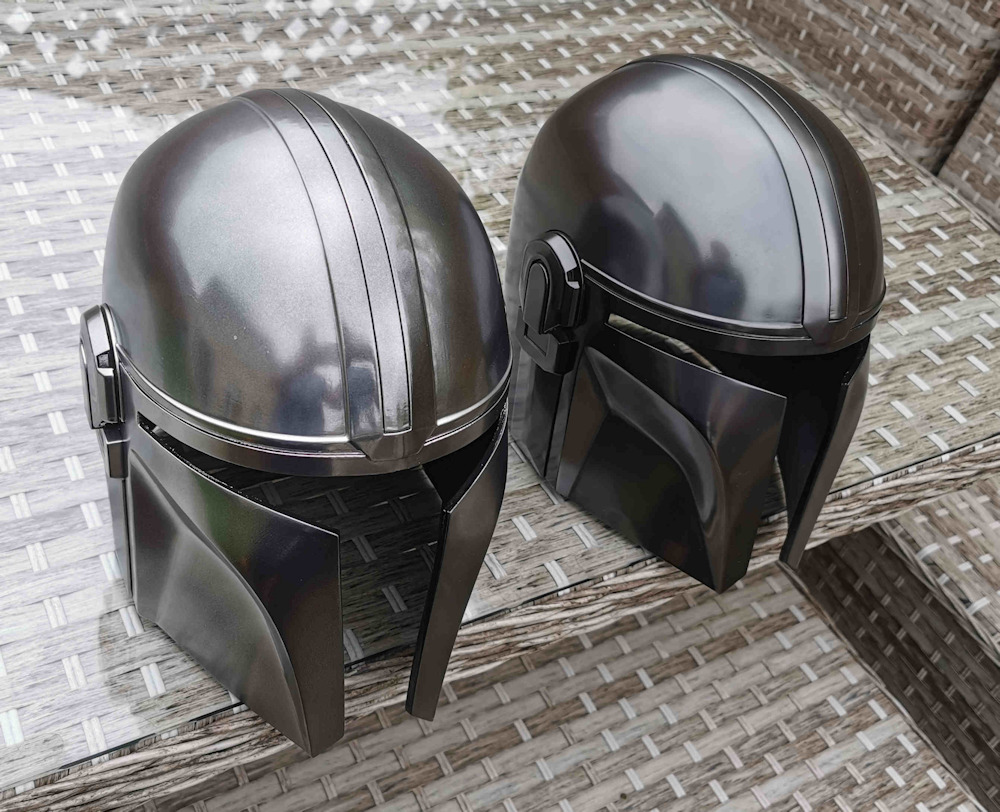
My conclusion, then, is that a clear coat is going to dull your shine and blur the reflection in all cases. This isn't a bad thing because it's not like the Mandalorian's helmet is so chrome-like that you see the reflection of everyone round about him. I personally think it looks more authentic.
The big issue is the way the clear coat mars the graphite by darkening it considerably and yet manages to actually improve the Alclad by making it more uniform and disguising the orange peel effect.
That's as far as I got before winter and Christmas happened, but the experiments will continue. Stuck indoors, I printed another five helmets, the irony being that while I spent the whole previous article complaining about helmets that failed and had to be stuck together, I now choose to print helmets in two parts. The top half is printed on my Tenlog and the lower half is printed on my Creality. This way I can get a helmet finished in just over a day and a half and use my practiced expertise in sticking the two together.
These latest helmets will be finished with Spaz Stix so I can see how good it is. I also now print the attachments in resin, which makes for amazing quality.